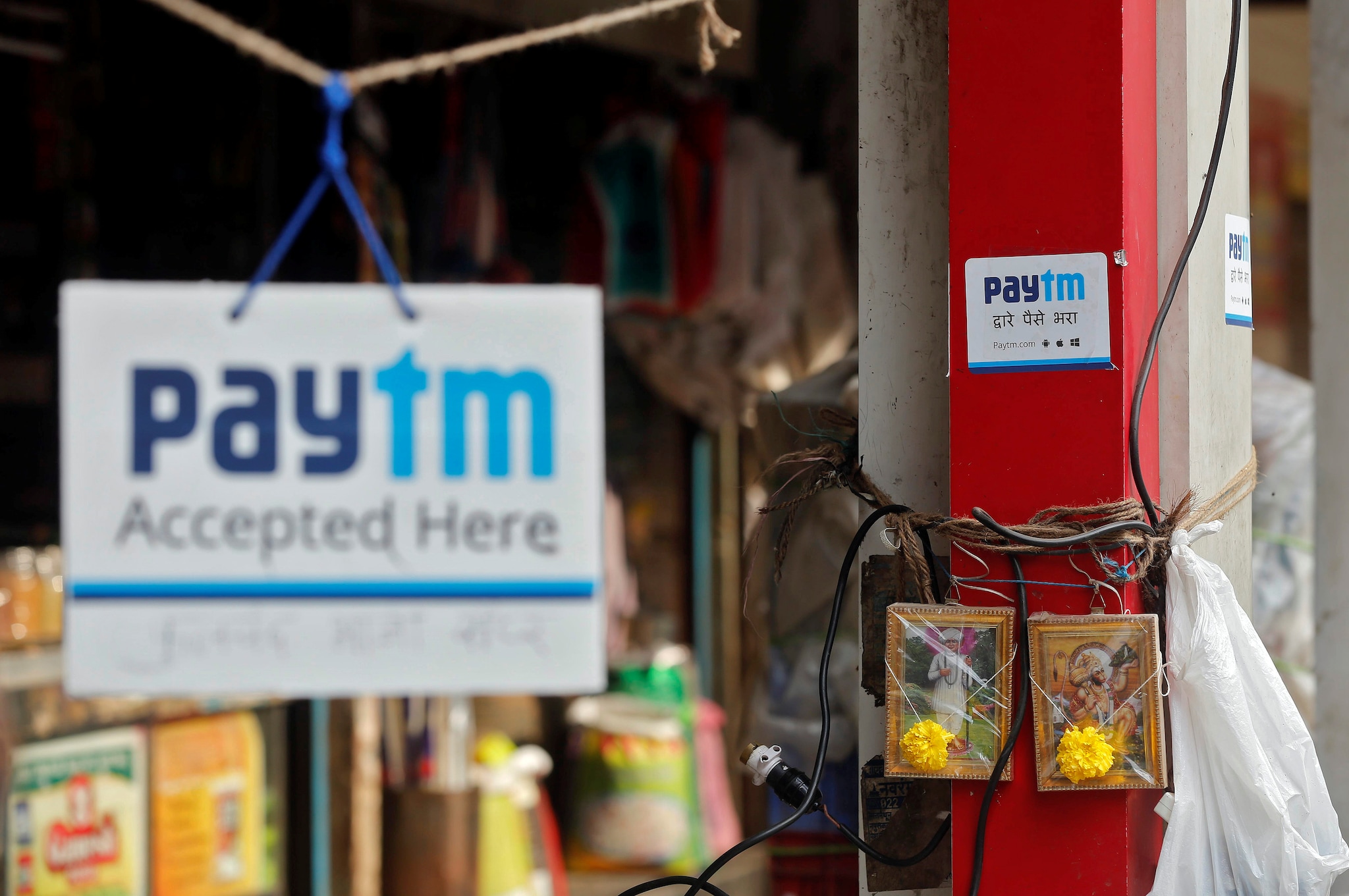

















 Listen to the Article (6 Minutes)
Listen to the Article (6 Minutes)
The concept paper is related to network tariffs a third-party new entrant would pay for using the network and CNG network for incumbent CGD where marketing exclusivity has ended.
The Petroleum and Natural Gas Regulatory Board of India (PNGRB) has floated a concept paper for determination of transportation rates for the city gas distribution (CGD) network and for compressed natural gas (CNG).
The concept paper is related to network tariffs a third-party new entrant would pay for using the network and CNG network for incumbent CGD where marketing exclusivity has ended.
CGD has infrastructure exclusivity for 20 years, with further extensions permissible in blocks of 10 years, rendering it is nearly impossible for a new entrant to set up its own infrastructure to retail gas, esp. in geographical areas with well-run CGDs.
The PNGRB has invited comments from stakeholders within three weeks and proposes to hold an open house discussion in a month’s time.
PNGRB has made the following recommendations for determination of tariffs:
* Recommending an internal rate of return of 14%
* Auction pricing
(a) Bidding through 3 parameters i.e. tariffs, volumes and time period for capacity requirement
(b) Based on regular reserve price of Rs30/mmbtu and Rs2/kg for transportation rate for CGD
This move is basically undertaken to create competition and provide more options to consumers. There is a possibility, however, that the final regulations might be different and also that it could be challenged by the existing players.
The Supreme Court in a 2015 judgement in the IGL-PNGRB case ruled that The PNGRB Act does not empower the regulator to fix tariffs for CGD networks.
In fact, the regulator, too, has in the concept paper acknowledged that the regulatory framework needs to be revisited given the SC’s past ruling.
Additionally, cases pertaining to the end of marketing exclusivity of some of the CGDs and declaration of their networks as a common carrier with open access, which would be a prerequisite for a third-party to be granted network access, are also still ongoing in the courts and could hence be another legal hurdle.
Analysts said the move is unlikely to impact distributors. Morgan Stanley said that this move might impact the tariffs by 17 percent if the first recommendation is adopted. However, if there is a volume growth of 10 percent for these companies, earnings will not be impacted.
Citi said the concept paper does not come as a surprise and this could be business as usual for CGDs. JM Financial is of the view that there will unlikely be any impact on CGD companies.

Elon Musk forms several ‘X Holdings’ companies to fund potential Twitter buyout
3 Mins Read
Thursday’s filing dispelled some doubts, though Musk still has work to do. He and his advisers will spend the coming days vetting potential investors for the equity portion of his offer, according to people familiar with the matter
 Daily Newsletter
Daily Newsletter


| index | Price | Change |
|---|---|---|
| nifty 50 | ₹16,986.00 | -72.15 |
| sensex | ₹1,882.60 | +28.30 |
| nifty IT | ₹2,206.80 | +30.85 |
| nifty bank | ₹1,318.95 | -14.95 |
| index | Price | Change |
|---|---|---|
| nifty 50 | ₹16,986.00 | -7.15 |
| sensex | ₹1,882.60 | +8.30 |
| nifty IT | ₹2,206.80 | +3.85 |
| nifty bank | ₹1,318.95 | -1.95 |
| index | Price | Change |
|---|---|---|
| nifty 50 | ₹16,986.00 | -72.15 |
| sensex | ₹1,882.60 | +28.30 |
| nifty IT | ₹2,206.80 | +30.85 |
| nifty bank | ₹1,318.95 | -14.95 |
| index | Price | Change |
|---|---|---|
| nifty 50 | ₹16,986.00 | -7.15 |
| sensex | ₹1,882.60 | +8.30 |
| nifty IT | ₹2,206.80 | +3.85 |
| nifty bank | ₹1,318.95 | -1.95 |
| index | Price | Change |
|---|---|---|
| nifty 50 | ₹16,986.00 | -7.15 |
| sensex | ₹1,882.60 | +8.30 |
| nifty IT | ₹2,206.80 | +3.85 |
| nifty bank | ₹1,318.95 | -1.95 |
| Company | Price | Chng | %Chng |
|---|---|---|---|
| Dollar-Rupee | 73.3500 | 0.0000 | 0.00 |
| Euro-Rupee | 89.0980 | 0.0100 | 0.01 |
| Pound-Rupee | 103.6360 | -0.0750 | -0.07 |
| Rupee-100 Yen | 0.6734 | -0.0003 | -0.05 |
Answer Anonymously



 Listen to the Article (6 Minutes)
Listen to the Article (6 Minutes)
E-commerce firms may soon have to disclose who is funding their discounts, reported Business Standard, citing sources, adding that the move is to ensure companies are not indulging in predatory pricing. According to the sources mentioned in the report, under the upcoming e-commerce policy, e-commerce platforms will have to give proof with every product that …
Continue reading “E-commerce firms may soon be required to reveal discount source, says report”
E-commerce firms may soon have to disclose who is funding their discounts, reported Business Standard, citing sources, adding that the move is to ensure companies are not indulging in predatory pricing.
According to the sources mentioned in the report, under the upcoming e-commerce policy, e-commerce platforms will have to give proof with every product that the slash in prices is funded by the seller or brand rather than the platform itself.
“Under the e-commerce policy guidelines, platforms might have to give a detailed break-up of the discount in the pricing details to ensure e-commerce portals are not the ones financing it. Companies would even need to get yearly audits of discounts done mandatorily by independent auditors to ensure there has been no predatory pricing,” a commerce ministry official was quoted as saying in the report.
According to the report, the move is being initiated by the government to negate the undue advantage online platforms have and instead provide offline stores with the level playing field.
The new policy, the report added, will also include provisions around data localisation, and a regulatory authority to monitor the e-commerce business. In addition, the report said, the government might also heavily regulate cash-backs given on various platforms to ensure discounts are not given via the cash-back routes.

Elon Musk forms several ‘X Holdings’ companies to fund potential Twitter buyout
3 Mins Read
Thursday’s filing dispelled some doubts, though Musk still has work to do. He and his advisers will spend the coming days vetting potential investors for the equity portion of his offer, according to people familiar with the matter
 Daily Newsletter
Daily Newsletter


| index | Price | Change |
|---|---|---|
| nifty 50 | ₹16,986.00 | -72.15 |
| sensex | ₹1,882.60 | +28.30 |
| nifty IT | ₹2,206.80 | +30.85 |
| nifty bank | ₹1,318.95 | -14.95 |
| index | Price | Change |
|---|---|---|
| nifty 50 | ₹16,986.00 | -7.15 |
| sensex | ₹1,882.60 | +8.30 |
| nifty IT | ₹2,206.80 | +3.85 |
| nifty bank | ₹1,318.95 | -1.95 |
| index | Price | Change |
|---|---|---|
| nifty 50 | ₹16,986.00 | -72.15 |
| sensex | ₹1,882.60 | +28.30 |
| nifty IT | ₹2,206.80 | +30.85 |
| nifty bank | ₹1,318.95 | -14.95 |
| index | Price | Change |
|---|---|---|
| nifty 50 | ₹16,986.00 | -7.15 |
| sensex | ₹1,882.60 | +8.30 |
| nifty IT | ₹2,206.80 | +3.85 |
| nifty bank | ₹1,318.95 | -1.95 |
| index | Price | Change |
|---|---|---|
| nifty 50 | ₹16,986.00 | -7.15 |
| sensex | ₹1,882.60 | +8.30 |
| nifty IT | ₹2,206.80 | +3.85 |
| nifty bank | ₹1,318.95 | -1.95 |
| Company | Price | Chng | %Chng |
|---|---|---|---|
| Dollar-Rupee | 73.3500 | 0.0000 | 0.00 |
| Euro-Rupee | 89.0980 | 0.0100 | 0.01 |
| Pound-Rupee | 103.6360 | -0.0750 | -0.07 |
| Rupee-100 Yen | 0.6734 | -0.0003 | -0.05 |
Answer Anonymously

Shriram City Union Finance on Monday said that TPG deciding to sell its stake in the company was a part of the business cycle and nothing more than that.
Piramal Enterprises, as well as TPG, decided to exit Shriram Capital. A restructuring of group entities is likely on the cards.
“Shriram Capital has already put out a press note earlier that TPG is looking to exit. They have been with us for close to eight years and it is natural that they exit. Their horizon of investment cycle has come to close, so there is nothing extraordinary or new in it, it is just nature of their investment that they exit,” said S Chakravarti, MD and CEO, Shriram City Union Finance.
On Piramal Enterprises’ exit, he said the only issue remains to be the challenge of finding suitors for the stake and modalities.
Talking about financials of the Shriram City Union Finance, he said the company has raised about Rs 2700 crore in the first quarter. However, if one were to compare the first quarter of last year to this year, there is a tightening of liquidity.
“We do plan to hit the debt market again in July and are also planning to issues some overseas bond issues and also have a pipeline of close to Rs 4000 crore proposals with the banks. So not overly concerned about liquidity,” he said.
The company is committed to 18 percent asset under management growth in FY20, he said, adding that there could be a 10-15 basis points compression in net interest margins to the current 12.7 percent.
Going forward the emphasis would be more on small business finance and not seeing any delinquency issues in that market.


 Listen to the Article (6 Minutes)
Listen to the Article (6 Minutes)
Central Railway’s chief public relations officer Sunil Udasi said that the move is in line with national policy and Indian Railway’s commitment for a clean environment.
Wind generated energy is helping Central Railway to save Rs 35 lakh every year, reported Mid Day. The use of wind energy, the report added, will also help the nation to reduce carbon footprint by 0.082 million tonnes of Carbon Dioxide.
Central Railway’s chief public relations officer Sunil Udasi, who was quoted speaking in the report, said that the move is in line with national policy and Indian Railway’s commitment for a clean environment. As per Udasi, the zone had made an agreement with National Thermal Power Corporation’s (NTPC) Vidyut Vyapar Nigam Ltd for the supply of wind energy. Following this, the supply began on June 22 from National Aluminium Company’s (NALCO) wind energy plant in Jath Sangli, added the report.
In addition, the official also said to the report that the new project will enable the railway zone to save approx Rs. 35 crore annually towards difference in tariff and cost of Renewable Energy Certificates partially besides reducing nations carbon footprint considerably.
The move could be a big step towards taking on pollution and shifting towards eco-friendly power as the railway has been a major consumer of energy in the country.

Elon Musk forms several ‘X Holdings’ companies to fund potential Twitter buyout
3 Mins Read
Thursday’s filing dispelled some doubts, though Musk still has work to do. He and his advisers will spend the coming days vetting potential investors for the equity portion of his offer, according to people familiar with the matter
 Daily Newsletter
Daily Newsletter


| index | Price | Change |
|---|---|---|
| nifty 50 | ₹16,986.00 | -72.15 |
| sensex | ₹1,882.60 | +28.30 |
| nifty IT | ₹2,206.80 | +30.85 |
| nifty bank | ₹1,318.95 | -14.95 |
| index | Price | Change |
|---|---|---|
| nifty 50 | ₹16,986.00 | -7.15 |
| sensex | ₹1,882.60 | +8.30 |
| nifty IT | ₹2,206.80 | +3.85 |
| nifty bank | ₹1,318.95 | -1.95 |
| index | Price | Change |
|---|---|---|
| nifty 50 | ₹16,986.00 | -72.15 |
| sensex | ₹1,882.60 | +28.30 |
| nifty IT | ₹2,206.80 | +30.85 |
| nifty bank | ₹1,318.95 | -14.95 |
| index | Price | Change |
|---|---|---|
| nifty 50 | ₹16,986.00 | -7.15 |
| sensex | ₹1,882.60 | +8.30 |
| nifty IT | ₹2,206.80 | +3.85 |
| nifty bank | ₹1,318.95 | -1.95 |
| index | Price | Change |
|---|---|---|
| nifty 50 | ₹16,986.00 | -7.15 |
| sensex | ₹1,882.60 | +8.30 |
| nifty IT | ₹2,206.80 | +3.85 |
| nifty bank | ₹1,318.95 | -1.95 |
| Company | Price | Chng | %Chng |
|---|---|---|---|
| Dollar-Rupee | 73.3500 | 0.0000 | 0.00 |
| Euro-Rupee | 89.0980 | 0.0100 | 0.01 |
| Pound-Rupee | 103.6360 | -0.0750 | -0.07 |
| Rupee-100 Yen | 0.6734 | -0.0003 | -0.05 |
Answer Anonymously



 Listen to the Article (6 Minutes)
Listen to the Article (6 Minutes)
Merchant Discount Rate (MDR) that banks and card companies charge for digital transactions to consumers will help reduce the burn rate of the SoftBank backed company and turn it profitable, two people aware of the development told ET.
Digital payments platform Paytm denied reports that the company will charge transaction fees to customers beginning July 1. The Economic Times today reported that Paytm will now pass on the merchant discount rate (MDR) to its customers, making transactions through Paytm costly.
The move would help reduce the burn rate of the SoftBank-backed company and turn it profitable, reported ET, citing two people aware of the development.
Paytm has clarified that the company does not charge any convenience fee from customers on using any payment method.
“There have been few merchants like educational institutes or utility service providers who do not absorb credit card charges and expect customers to pay the same. We would like to reiterate that these charges aren’t levied by Paytm in any scenario,” said Paytm.
The payment firm also added that it does not plan to levy any such charges in future.
MDR is charged by banks and card companies to customers for digital transactions.
For Paytm, the charge amounts to 1 percent on payments through credit cards, 0.9 percent for debit cards and up to Rs 12-15 for transactions by net banking and the Unified Payments Interface (UPI), one of the sources told ET, adding that Paytm has been absorbing the charge and has not been charging anything extra for payments made through the platform.

Elon Musk forms several ‘X Holdings’ companies to fund potential Twitter buyout
3 Mins Read
Thursday’s filing dispelled some doubts, though Musk still has work to do. He and his advisers will spend the coming days vetting potential investors for the equity portion of his offer, according to people familiar with the matter
 Daily Newsletter
Daily Newsletter


| index | Price | Change |
|---|---|---|
| nifty 50 | ₹16,986.00 | -72.15 |
| sensex | ₹1,882.60 | +28.30 |
| nifty IT | ₹2,206.80 | +30.85 |
| nifty bank | ₹1,318.95 | -14.95 |
| index | Price | Change |
|---|---|---|
| nifty 50 | ₹16,986.00 | -7.15 |
| sensex | ₹1,882.60 | +8.30 |
| nifty IT | ₹2,206.80 | +3.85 |
| nifty bank | ₹1,318.95 | -1.95 |
| index | Price | Change |
|---|---|---|
| nifty 50 | ₹16,986.00 | -72.15 |
| sensex | ₹1,882.60 | +28.30 |
| nifty IT | ₹2,206.80 | +30.85 |
| nifty bank | ₹1,318.95 | -14.95 |
| index | Price | Change |
|---|---|---|
| nifty 50 | ₹16,986.00 | -7.15 |
| sensex | ₹1,882.60 | +8.30 |
| nifty IT | ₹2,206.80 | +3.85 |
| nifty bank | ₹1,318.95 | -1.95 |
| index | Price | Change |
|---|---|---|
| nifty 50 | ₹16,986.00 | -7.15 |
| sensex | ₹1,882.60 | +8.30 |
| nifty IT | ₹2,206.80 | +3.85 |
| nifty bank | ₹1,318.95 | -1.95 |
| Company | Price | Chng | %Chng |
|---|---|---|---|
| Dollar-Rupee | 73.3500 | 0.0000 | 0.00 |
| Euro-Rupee | 89.0980 | 0.0100 | 0.01 |
| Pound-Rupee | 103.6360 | -0.0750 | -0.07 |
| Rupee-100 Yen | 0.6734 | -0.0003 | -0.05 |
Answer Anonymously



 Listen to the Article (6 Minutes)
Listen to the Article (6 Minutes)
The challenges to implement the GST were compounded by some outlandish and exaggerated comments of the not so well-informed. It would, therefore, be only fair to look back the last two years and analyse the implementation and the impact/ consequences of the GST.
Today, the Goods and Services Tax (GST) regime enters its third year. The monumental restructuring of one of the world’s clumsiest indirect tax system was not an easy task. The challenges to implement the GST were compounded by some outlandish and exaggerated comments of the not so well-informed. It would, therefore, be only fair to look back the last two years and analyse the implementation and the impact/ consequences of the GST.
The pre-GST regimeIn a federal structure, both the Centre and States were entitled to impose an indirect tax on goods. The States had multiple laws which entitled them to impose taxation at different points. There were twin challenges. Firstly, to get the States to agree because some of them felt they were losing their fiscal autonomy to tax and, secondly, to develop a consensus in the Parliament. The States were scared of the fear of the unknown. The critical point which enabled the Government to persuade the States was to cushion them with a 14 percent annual increase from the tax base of 2015-16 for a period of five years.
The GST merged all these seventeen different laws and created one single taxation. The pre-GST rate of taxation as a standard rate for VAT was 14.5 percent, excise at 12.5 percent and added with the CST and the cascading effect of tax on tax, the tax payable by the consumer was 31 percent. The entertainment tax was being levied by the States from 35 percent to 110 percent. The assessee had to file multiple returns, entertain multiple inspectors and additionally face the inefficiency – trucks being stranded at the State boundaries for days altogether.
The GST changed this scenario completely. Today, there is only one tax, online returns, no entry tax, no truck queues and no inter-state barriers.
Consumer and assessee friendly
After two years, one can confidently argue, without fear of contradiction that GST proved to be both consumer and assessee friendly. The high taxation of the pre-GST era pinched the consumers’ pocket and acted as a disincentive against tax compliance. The last two years have seen each of the meetings of the GST Council reducing the tax burden on consumers as the tax collections improved. An efficient tax system certainly leads to better compliance. The 31 percent tax, which was temporarily 28 percent, has seen the largest single reform.
Most items of consumer use have been brought in the 18 percent, 12 percent and even 5 percent category. Only luxury and sin goods remain in addition to some white goods. A sudden reduction of all categories can lead to a massive loss of government revenue leaving the government without resources to spend. This exercise had to be done in a gradual manner as the revenues increased. The Cinema tickets, earlier taxed at 35 percent to 110 percent, have been brought down to 12 percent and 18 percent. Most items of daily use are in the zero or 5 percent slab. The loss to the revenue on account of this reduction collectively has been more than Rs.90,000 crore annually.
Widening tax base and higher revenue
The assessee base in the last two years has increased by 84 percent. The number of assessees covered by the GST were around 65 lakh. Today, they are at 1.20 crores. This obviously leads to higher revenue collections. In the eight months of 2017-18 (July to March), the average revenue collected per month was Rs.89,700 crore per month. In the next year (2018-19), the monthly average has increased by about 10 percent to Rs.97,100 crore. The fear of the States today is that for the first five years they get a guaranteed 14 percent increase. The lurking doubt is as to what will happen after five years? Every State has been paid its share of tax as also from the compensation fund, if necessary. We have just completed two years of GST. Already after the second year, twenty States are independently showing more than a 14 percent increase in their revenues and the compensation fund in their case is not necessary.
Simplification and compliance
Businesses upto an annual turnover of Rs.40 lakh are GST exempt. Those with a turnover upto Rs.1.5 crore can make use of the composition scheme and pay only one percent tax. There is now a single registration system which works online and the procedures for the trade and business are reviewed and simplified regularly.
A response to certain misconceived ideas
Many warned us that it may not be politically safe to introduce the GST. In several countries, governments lost elections because of the GST. India had one of the smoothest transformation. Within the first few weeks of the implementation, the new system settled down. There were a few protests in Surat. The issues were resolved. The BJP won all the Assembly seats in the Gujarat poll in Surat. In 2019, the BJP won the Surat seat by the highest margin in the country. Those who argued for a single slab GST must realise that a single slab is possible only in extremely affluent countries where there are no poor people. It would be inequitable to apply a single rate in countries where there are a large number of people below the poverty line. The direct tax is a progressive tax. The more you earn, the more you pay. An indirect tax is a regressive tax.
In the pre-GST regime, the rich and the poor, on various commodities, paid the same tax. The multiple slab system not only checked inflation, it also ensured that the Aam Aadmi products are not exorbitantly taxed. Illustratively, a Hawai chappal and a Mercedes car cannot be taxed at the same rate. This is not to suggest that the rationalisation of slabs is not needed. That process is already on. Except on luxury and sin goods, the 28 percent slab has almost been phased out. Zero and 5 percent slabs will always remain. As revenue increases further, it will give an opportunity to policy makers to possibly merge the 12 percent and 18 percent slab into one rate, thus, effectively making the GST a two rate tax.
The Role of the GST Council
The GST Council is India’s first statutory federal institution. The Centre and the States jointly sit and decide. Both have pooled their fiscal rights in a collective forum to create one common market. My own experience of two years while chairing the GST Council, was that Finance Ministers’ of States, notwithstanding the political position their parties take, have displayed a high level of statesmanship and acted with maturity. The Council worked on the principle of consensus. This has added to the credibility of the decision making process. I am sure this trend will continue in future.
Arun Jaitley was the minister of finance and corporate affairs of the Government of India from 2014 to 2019.

Elon Musk forms several ‘X Holdings’ companies to fund potential Twitter buyout
3 Mins Read
Thursday’s filing dispelled some doubts, though Musk still has work to do. He and his advisers will spend the coming days vetting potential investors for the equity portion of his offer, according to people familiar with the matter
 Daily Newsletter
Daily Newsletter


| index | Price | Change |
|---|---|---|
| nifty 50 | ₹16,986.00 | -72.15 |
| sensex | ₹1,882.60 | +28.30 |
| nifty IT | ₹2,206.80 | +30.85 |
| nifty bank | ₹1,318.95 | -14.95 |
| index | Price | Change |
|---|---|---|
| nifty 50 | ₹16,986.00 | -7.15 |
| sensex | ₹1,882.60 | +8.30 |
| nifty IT | ₹2,206.80 | +3.85 |
| nifty bank | ₹1,318.95 | -1.95 |
| index | Price | Change |
|---|---|---|
| nifty 50 | ₹16,986.00 | -72.15 |
| sensex | ₹1,882.60 | +28.30 |
| nifty IT | ₹2,206.80 | +30.85 |
| nifty bank | ₹1,318.95 | -14.95 |
| index | Price | Change |
|---|---|---|
| nifty 50 | ₹16,986.00 | -7.15 |
| sensex | ₹1,882.60 | +8.30 |
| nifty IT | ₹2,206.80 | +3.85 |
| nifty bank | ₹1,318.95 | -1.95 |
| index | Price | Change |
|---|---|---|
| nifty 50 | ₹16,986.00 | -7.15 |
| sensex | ₹1,882.60 | +8.30 |
| nifty IT | ₹2,206.80 | +3.85 |
| nifty bank | ₹1,318.95 | -1.95 |
| Company | Price | Chng | %Chng |
|---|---|---|---|
| Dollar-Rupee | 73.3500 | 0.0000 | 0.00 |
| Euro-Rupee | 89.0980 | 0.0100 | 0.01 |
| Pound-Rupee | 103.6360 | -0.0750 | -0.07 |
| Rupee-100 Yen | 0.6734 | -0.0003 | -0.05 |
Answer Anonymously



 Listen to the Article (6 Minutes)
Listen to the Article (6 Minutes)
Markets could react initially positively to the Budget as a crucial event (that could potentially turn out to be negative) is out of the way. Sectoral and stockwise reactions could continue for a couple of days, said HDFC Securities in its research report.
Markets could react initially positively to the Budget as a crucial event is out of the way and sectoral and stock-wise reactions could continue for a couple of days, said HDFC Securities in its research report.
It said that PSU stocks could perform even beyond that if the measures announced are prudent, credible and achievable. After 1-2 weeks, the markets could come back to its original trajectory reacting to the global risk appetite, interest rate trends, local micro and macro developments.
“We expect the trend of a diminishing budget impact on the market to continue. Since 2010, the Sensex has gone up seven times out of ten in the month after the budget (including the interim ones). But then, the benchmark index has also fallen eight out of ten times during the month prior to the budget. This time as we have not seen a significant correction ahead of the budget, chances of a big rise post budget seem limited”, the report added.
Speaking on the Union Budget 2019 themes, it said that GST collection growth, rural income growth and Insolvency code progress will play as three major themes to follow in 2019-20. Private consumption is expected to stay strong; 2019 monsoon could be a concern. Overall, there are fewer negatives from this budget. Possibilities of an unexpected large positive are also limited.
On the election results, the report added that the government could fund its election promises and maintain policy continuity (focus on agriculture, rural development, infra spending). Providing sources of funds to MSME could also gain attention in the Budget.

Elon Musk forms several ‘X Holdings’ companies to fund potential Twitter buyout
3 Mins Read
Thursday’s filing dispelled some doubts, though Musk still has work to do. He and his advisers will spend the coming days vetting potential investors for the equity portion of his offer, according to people familiar with the matter
 Daily Newsletter
Daily Newsletter


| index | Price | Change |
|---|---|---|
| nifty 50 | ₹16,986.00 | -72.15 |
| sensex | ₹1,882.60 | +28.30 |
| nifty IT | ₹2,206.80 | +30.85 |
| nifty bank | ₹1,318.95 | -14.95 |
| index | Price | Change |
|---|---|---|
| nifty 50 | ₹16,986.00 | -7.15 |
| sensex | ₹1,882.60 | +8.30 |
| nifty IT | ₹2,206.80 | +3.85 |
| nifty bank | ₹1,318.95 | -1.95 |
| index | Price | Change |
|---|---|---|
| nifty 50 | ₹16,986.00 | -72.15 |
| sensex | ₹1,882.60 | +28.30 |
| nifty IT | ₹2,206.80 | +30.85 |
| nifty bank | ₹1,318.95 | -14.95 |
| index | Price | Change |
|---|---|---|
| nifty 50 | ₹16,986.00 | -7.15 |
| sensex | ₹1,882.60 | +8.30 |
| nifty IT | ₹2,206.80 | +3.85 |
| nifty bank | ₹1,318.95 | -1.95 |
| index | Price | Change |
|---|---|---|
| nifty 50 | ₹16,986.00 | -7.15 |
| sensex | ₹1,882.60 | +8.30 |
| nifty IT | ₹2,206.80 | +3.85 |
| nifty bank | ₹1,318.95 | -1.95 |
| Company | Price | Chng | %Chng |
|---|---|---|---|
| Dollar-Rupee | 73.3500 | 0.0000 | 0.00 |
| Euro-Rupee | 89.0980 | 0.0100 | 0.01 |
| Pound-Rupee | 103.6360 | -0.0750 | -0.07 |
| Rupee-100 Yen | 0.6734 | -0.0003 | -0.05 |
Answer Anonymously











 Listen to the Article (6 Minutes)
Listen to the Article (6 Minutes)
The sales’ numbers, as reported by the automaker, is slightly higher than Nomura’s estimate — 4.02 lakh units.
Two and three-wheeler maker Bajaj Auto on Monday said its total sales for the month of June stood flat at 4.04 lakh units comparing on a year-on-year (YoY) basis.
Shares of Bajaj Auto increased by 2.22 percent, when the firm announced its sales numbers for the month of June. The stock was trading with 1.35 percent gain at Rs 2866.25 apiece, as of 10:08 AM.
The exports, the company said, increased by three percent at 1.75 lakh units, a notch higher than 1.69 lakh units that was recorded in June 2018.
The domestic sales slipped by two percent to 2.29 lakh units from 2.34 lakh units recorded last year in June.
The total motorcycle sales increased by four percent at 3.51 lakh units as against 3.37 lakh units in June 2018. The 3-wheeler sales, however, dropped by 20 percent to 53,333 units. The firm sold 66,677 units in June 2018.

Elon Musk forms several ‘X Holdings’ companies to fund potential Twitter buyout
3 Mins Read
Thursday’s filing dispelled some doubts, though Musk still has work to do. He and his advisers will spend the coming days vetting potential investors for the equity portion of his offer, according to people familiar with the matter
 Daily Newsletter
Daily Newsletter


| index | Price | Change |
|---|---|---|
| nifty 50 | ₹16,986.00 | -72.15 |
| sensex | ₹1,882.60 | +28.30 |
| nifty IT | ₹2,206.80 | +30.85 |
| nifty bank | ₹1,318.95 | -14.95 |
| index | Price | Change |
|---|---|---|
| nifty 50 | ₹16,986.00 | -7.15 |
| sensex | ₹1,882.60 | +8.30 |
| nifty IT | ₹2,206.80 | +3.85 |
| nifty bank | ₹1,318.95 | -1.95 |
| index | Price | Change |
|---|---|---|
| nifty 50 | ₹16,986.00 | -72.15 |
| sensex | ₹1,882.60 | +28.30 |
| nifty IT | ₹2,206.80 | +30.85 |
| nifty bank | ₹1,318.95 | -14.95 |
| index | Price | Change |
|---|---|---|
| nifty 50 | ₹16,986.00 | -7.15 |
| sensex | ₹1,882.60 | +8.30 |
| nifty IT | ₹2,206.80 | +3.85 |
| nifty bank | ₹1,318.95 | -1.95 |
| index | Price | Change |
|---|---|---|
| nifty 50 | ₹16,986.00 | -7.15 |
| sensex | ₹1,882.60 | +8.30 |
| nifty IT | ₹2,206.80 | +3.85 |
| nifty bank | ₹1,318.95 | -1.95 |
| Company | Price | Chng | %Chng |
|---|---|---|---|
| Dollar-Rupee | 73.3500 | 0.0000 | 0.00 |
| Euro-Rupee | 89.0980 | 0.0100 | 0.01 |
| Pound-Rupee | 103.6360 | -0.0750 | -0.07 |
| Rupee-100 Yen | 0.6734 | -0.0003 | -0.05 |
Answer Anonymously



